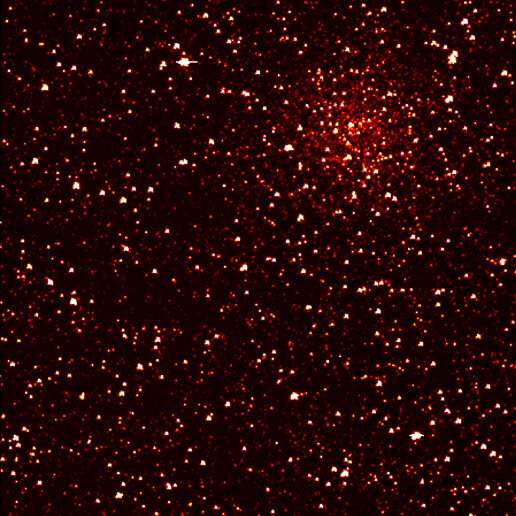November 29, 2021 report
Study inspects subdwarf B stars in the open cluster NGC 6791

Using NASA's Kepler spacecraft and the MMT telescope in Arizona, an international team of astronomers has investigated a population of subdwarf B stars in an open cluster known as NGC 6791. Results of the study, published November 18 on arXiv.org, deliver essential information regarding the properties of these stars, which could be crucial in advancing our knowledge about this cluster.
In general, hot subdwarf B (sdB) stars are extreme horizontal branch objects composed of helium burning cores and very thin hydrogen envelopes. They are compact objects, typically about half as massive as the sun, with radii between 0.1 and 0.3 solar radii and effective temperatures ranging from 20,000 to 40,000 K.
Astronomers are especially interested in finding and characterizing pulsating subdwarf B (sdBV) stars, which showcase two types of flux variation. The first is associated with short period pressure modes (p-modes) with pulsation periods of the order of minutes and amplitudes of pulsation modes reaching tens of mmag. The second is due to long-period gravity modes (g-modes) exhibiting pulsation periods of the order of hours and amplitudes of pulsation modes below 10 mmag.
Recently, a group of researchers led by Sachu Sanjayan of the Pedagogical University of Cracow in Poland, has conducted a search for sdBVs in the open cluster NGC 6791—at about 8 billion years old, it's one of the oldest and most metal-rich clusters in the Milky Way. The cluster is located some 13,300 light years away in the Lyra constellation and is unusually massive (with a mass of around 4,000 solar masses), hosting a high population of stars.
"The goal of our work was to find all sdBV stars in NGC 6791, provide the mode identification of detected modes, derive parameters by means of asteroseismology, and compare them with parameters of field counterparts," the astronomers wrote in the paper.
Sanjayan's team identified three sdBVs in NGC 6791, namely: KIC 2569576 (B3), KIC 2438324 (B4) and KIC 2437937 (B5). Although these stars were classified as pulsators by previous research, the astronomers now managed to obtain extended time coverage and therefore higher-quality data. This allowed them to confirm already reported frequencies in the g-mode region and to detect additional ones.
The effective temperatures of B3, B4 and B5 were measured to be 24,250, 24,786 and 23,844 K, respectively. It was found that B4 is a binary system containing a sdBV star and a main sequence companion with an orbital period of about 9.5 hours. The authors of the paper do not exclude the possibility that B3 and B5 may also be binaries, as they detected hints of radial velocity variability in the case of these two stars.
Moreover, the astronomers also analyzed spectra of four other hot stars that were identified as cluster members. However, it turned out that these objects showcase no photometric variability. The researchers added that the remaining known sdBs in NGC 6791 do not show any pulsation-related light variation down to their detection thresholds.
More information: S.Sanjayan et al, Pulsating subdwarf B stars in the oldest open cluster NGC 6791. arXiv:2111.09873v1 [astro-ph.SR], arxiv.org/abs/2111.09873
© 2021 Science X Network




















